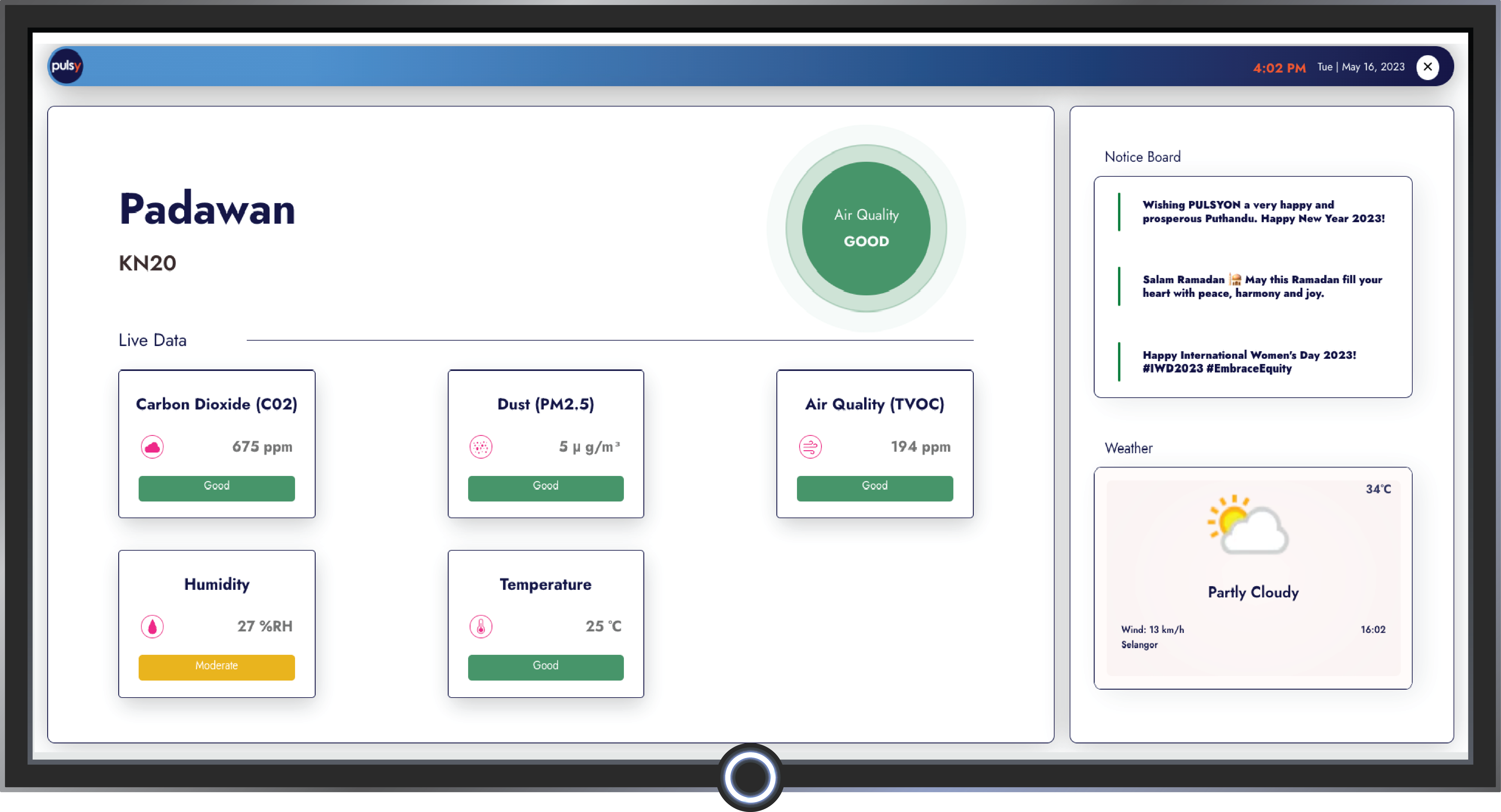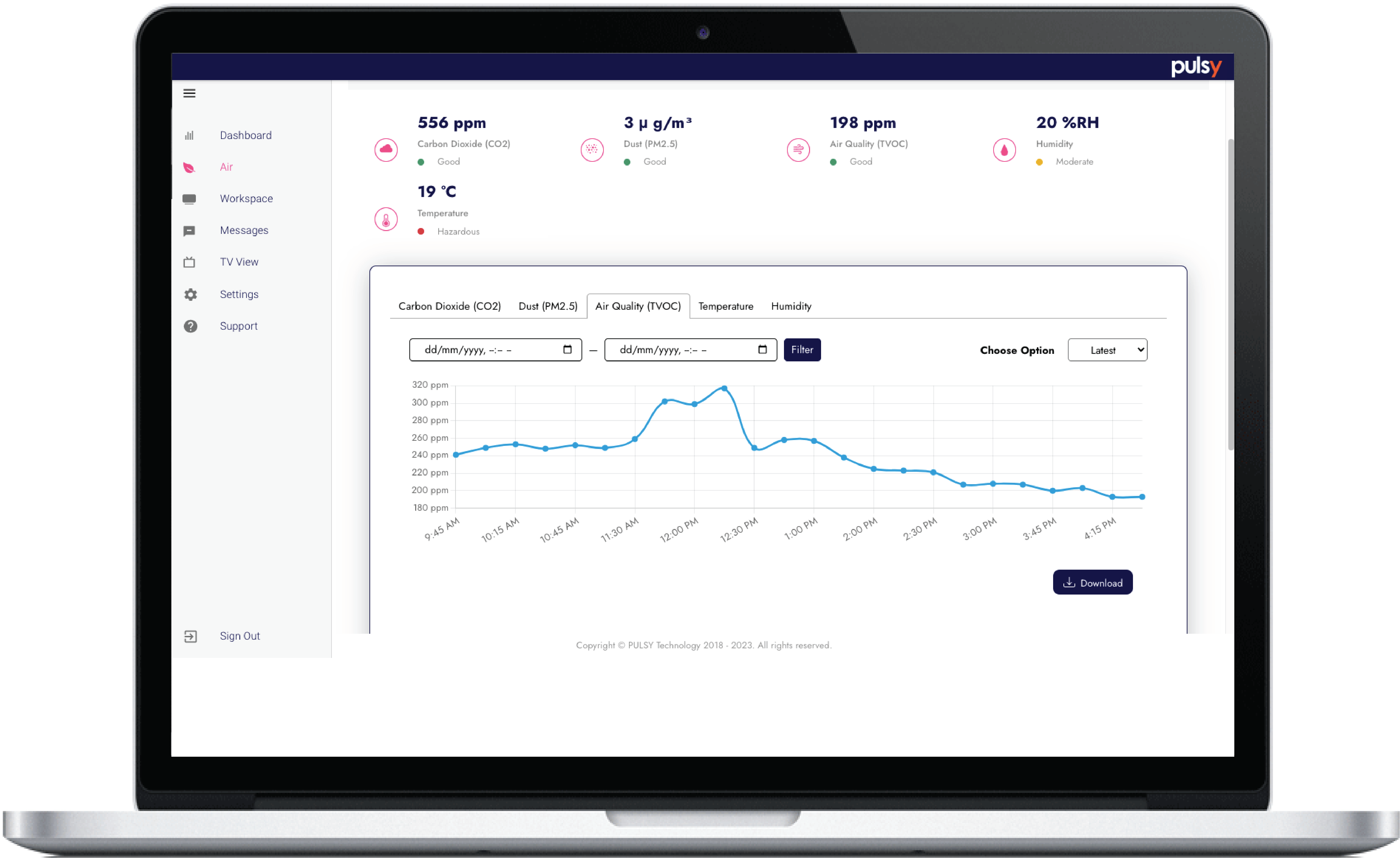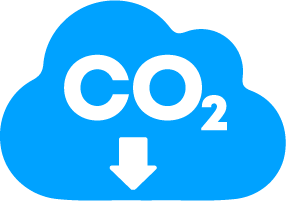
Better Air, Better Productivity
Are you ready to breathe easy and boost productivity? Discover how PULSYair can help transform your workplace environment. With real-time data and actionable insights, you can create a healthier and more productive workspace for you and your team. Take the first step towards better air and better productivity today – explore our products and get in touch to schedule a free consultation.
[AIR QUANTIFIED]
Monitor Indoor Air Quality (IAQ)
Monitoring indoor air quality is crucial for creating a safe, healthy, and productive workplace, as poor air quality can lead to various health problems, discomfort, distraction, and decreased productivity. PULSYair provides real-time data analysis and alert notifications to help businesses stay ahead of potential air quality issues and take proactive measures to maintain a healthy and productive work environment. Trust our product to provide you with the insights and alerts you need to create a safer and more productive workplace.
[AIR QUANTIFIED]

Benefits
Features
Applications




